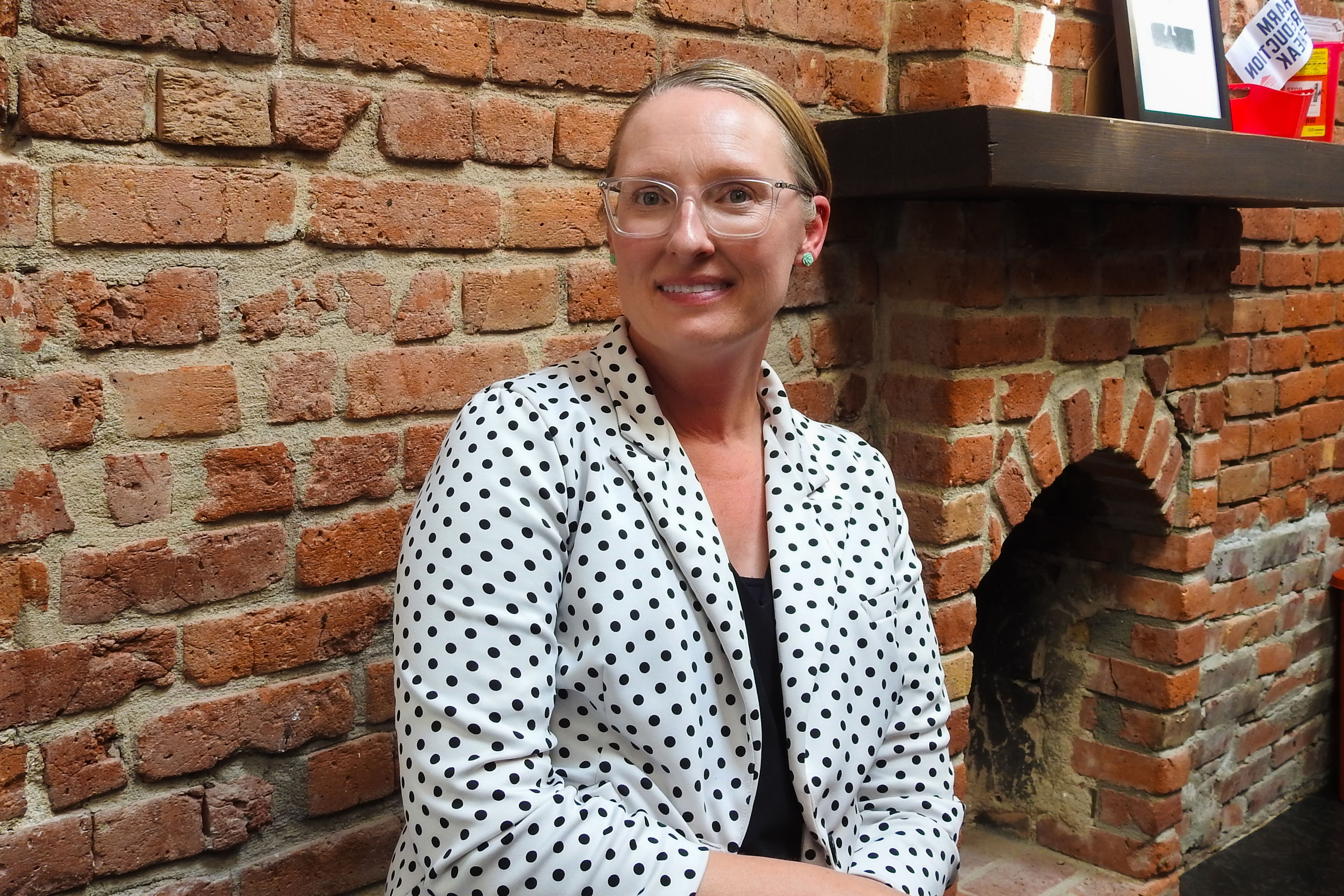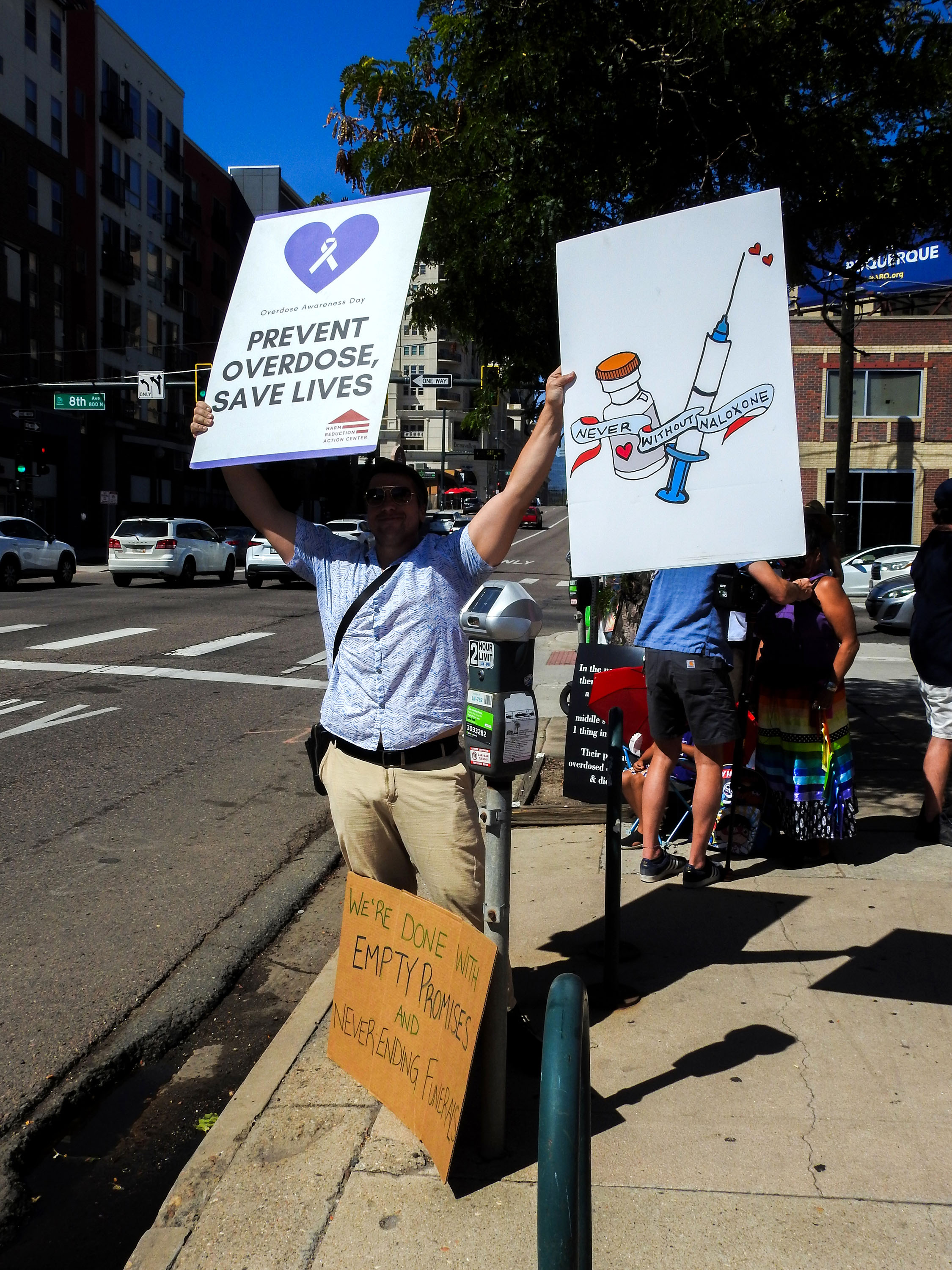DENVER — On a bustling road nook one current afternoon outdoors the workplaces of the Hurt Discount Motion Middle, workers of the schooling and advocacy nonprofit handed out free naloxone kits to passersby.
Distributing the opioid reversal medicine is important to the middle’s work to scale back deadly overdoses locally. However how lengthy the group can proceed doing so is in query. The middle is determined by Colorado’s Opioid Antagonist Bulk Buy Fund, often known as the Naloxone Bulk Buy Fund, which now lacks a recurring supply of cash — regardless of a whole bunch of thousands and thousands of {dollars} in nationwide opioid lawsuit settlement money flowing into the state.
“Our concern is that we won’t have access to naloxone and that means that more people will die of a very preventable overdose,” mentioned Lisa Raville, government director of the middle.
The majority fund was created in 2019 to supply free naloxone to organizations just like the Hurt Discount Motion Middle. The fund’s annual finances grew from simply over $300,000 in fiscal 12 months 2019 to greater than $8.5 million in fiscal 2022, in response to legislative reviews by the state’s Overdose Prevention Unit.
The fund has boosted the provision of the medicine all through Colorado, which handed a regulation in 2013 that offers authorized immunity to medical suppliers who prescribe the drug and to any one who administers it to somebody struggling an overdose. The fund at the moment offers greater than $550,000 price of naloxone kits to numerous entities every month.
Regardless of the elevated availability of naloxone, deadly opioid overdoses continued to rise. In 2023, 1,292 individuals in Colorado died of an opioid overdose, in response to knowledge from the Colorado Division of Public Well being and Atmosphere. That was 132 extra individuals than the 12 months earlier than.
And now, one of many fund’s main cash sources, the American Rescue Plan handed by Congress in response to the covid-19 pandemic, is ready to run out subsequent 12 months. As of September, the Colorado fund had $8.6 million left, in response to Vanessa Bernal, a spokesperson for the state well being division.

The fund obtained a lift in September when the state’s Behavioral Well being Administration offered it with $3 million from a one-time Substance Use Prevention, Remedy, and Restoration Providers Block Grant and almost $850,000 by means of a State Opioid Response Grant. Colorado Lawyer Common Phil Weiser mentioned his workplace will “ensure that the necessary budget remains in place for the next year.”
The quantity of that funding and the place it would come from has but to be decided, and long-term options are nonetheless being weighed, as nicely. One choice to shore up the fund past the subsequent 12 months is to make use of Colorado’s share of settlement funds from the nationwide opioid lawsuits, mentioned Mary Sylla, former director of overdose prevention coverage and technique on the Nationwide Hurt Discount Coalition.
“It’s just completely ironic that something that addresses the opioid overdose crisis is underfunded at the very same time that these settlement funds are flowing,” Sylla mentioned. “There couldn’t be a better use for them.”
As of July, Colorado had obtained and distributed greater than $110 million in opioid settlement cash to areas, native governments, state entities, and infrastructure tasks, in response to the Colorado lawyer normal’s workplace, and the full is anticipated to succeed in greater than $750 million by 2038.
Nonetheless, greater than half of the settlement cash Colorado has obtained up to now has already been disbursed to its 19 Regional Opioid Abatement Councils, which have created their very own plans to distribute cash to packages comparable to substance abuse remedy facilities, public schooling campaigns, and coaching for emergency suppliers.
For instance, Denver’s council, which has obtained greater than $18 million since 2022, has disbursed cash to organizations in two- and three-year contracts, the bulk not together with the acquisition of naloxone.
“We thought we could all continue to get [naloxone] from the state health department and the Naloxone Bulk Purchase Fund,” Raville mentioned.
The Denver council is engaged on a plan for the approaching years, anticipated to come back out in mid-2025, and is contemplating the majority fund’s dwindling cash, mentioned Marie Curran, program coordinator for Denver’s opioid abatement funds.
Lawrence Pacheco, a spokesperson for the lawyer normal’s workplace, which manages 10% of the state’s opioid settlement {dollars}, mentioned the workplace “is working on options to ensure that this lifesaving medication can continue to be part of the state’s effort to abate the opioid crisis.” These choices haven’t but been made public.

California, the place Sylla works, has used settlement cash for a distribution program that’s much like Colorado’s. In Washington and Kentucky, as a part of the states’ settlements with Teva Prescription drugs, tens of hundreds of free naloxone kits can be out there to residents. Every state makes use of its opioid settlement funds in a different way, and whereas many present naloxone to residents in some method, together with by way of merchandising machines, there isn’t any central monitoring of naloxone distribution packages.
Over the previous 5 years, Colorado’s fund has distributed greater than half one million doses of the opioid reversal drug to a whole bunch of organizations and faculties throughout the state. Final 12 months, the Hurt Discount Motion Middle obtained 7,284 doses from the fund, which Raville estimates helped save greater than 4,500 lives.
Except extra cash is discovered, the majority fund runs the chance of getting to additional restrict distribution, leaving the a whole bunch of organizations that depend on it with little or no entry to free naloxone. Whereas the medicine grew to become out there over-the-counter nationally final fall, the $45 price ticket per two-dose bundle means it could actually stay out of attain for some who want it most.
In Could, the state introduced a plan for prioritizing which teams get the medicine from the majority fund with 4 classes, from “essential” to “low need,” based mostly on how regularly an entity instantly encounters people who find themselves most prone to experiencing or witnessing an overdose. The Hurt Discount Motion Middle has been categorised within the “essential” class. Faculty districts, in addition to faculties and universities, are within the next-highest class.
One other group, The Naloxone Undertaking, mentioned it was misclassified by not being put on the highest precedence stage. Because of this, it mentioned, it obtained simply 1,200 naloxone doses from the fund this 12 months, as an alternative of the 6,000 it requested.
“We would argue that we would fall under ‘essential’ because many of our programs are public-facing and consistently provide naloxone for people who use drugs and who are at the highest risk of experiencing overdose,” mentioned Rachael Duncan, affiliate director of The Naloxone Undertaking.
The group, which has chapters in 12 states, offers nasal and injectable types of naloxone to greater than 90% of Colorado’s hospitals, to provide to sufferers earlier than they’re discharged from the emergency division or from labor and supply models. Greater than half of the 12,000 naloxone kits the challenge has distributed to Colorado medical entities have come from the majority fund.
One other group, UCHealth’s Middle for Dependency, Habit and Rehabilitation, referred to as CeDAR, which gives residential, outpatient, and telehealth remedy, is now not eligible to obtain free naloxone, as a result of its sufferers usually are insured or will pay out-of-pocket.
Karli Yarnell, a CeDAR doctor assistant, mentioned that even when somebody will pay for it, that doesn’t imply they will get to a pharmacy to select up the medication.
And Duncan is worried about what the lack of doses will imply for organizations like The Naloxone Undertaking and CeDAR.
“What I fear will happen is a scarcity mindset of organizations competing for funding,” Duncan mentioned. “But I also worry about places that are used to getting it so reliably running out.”




